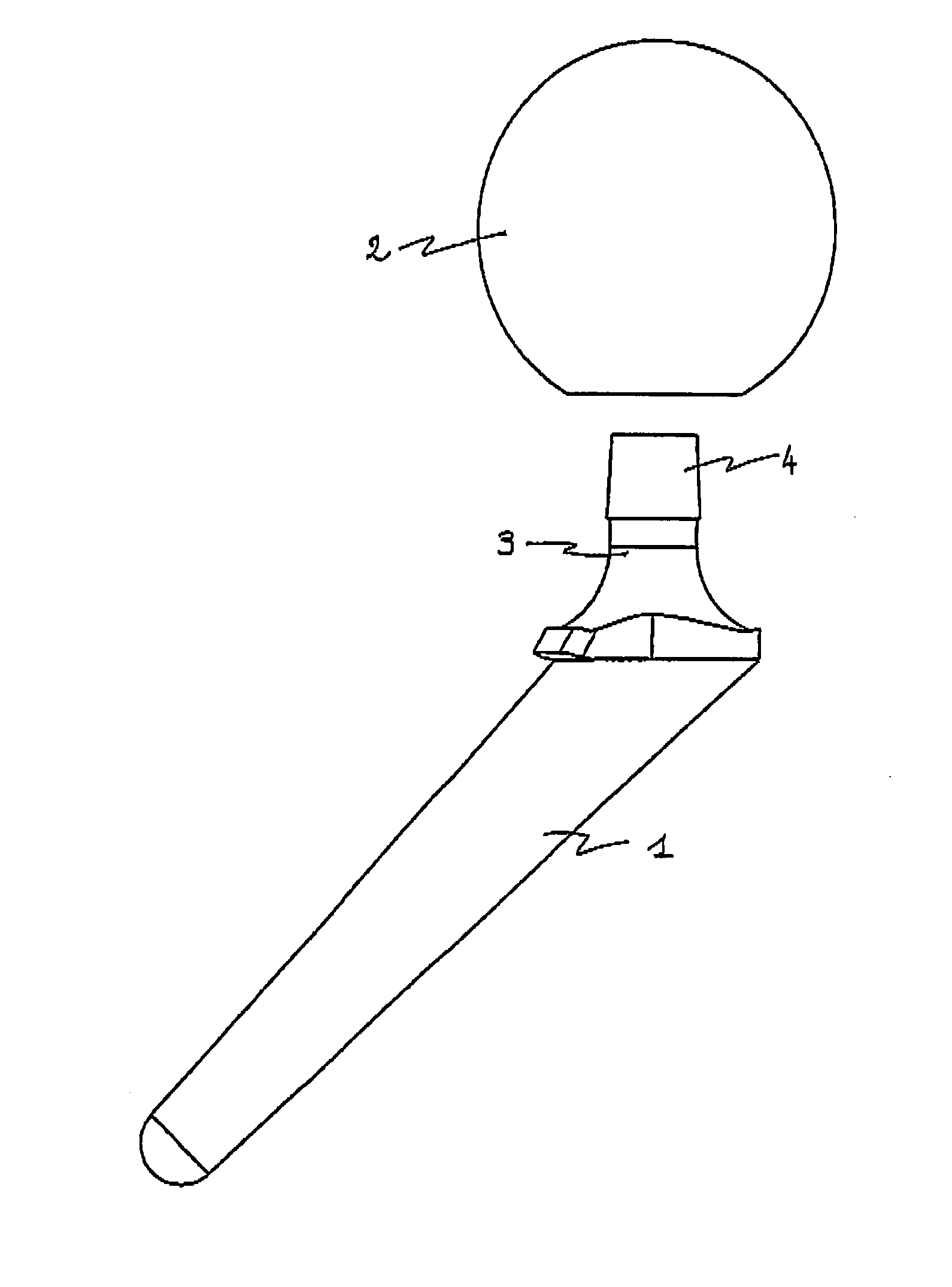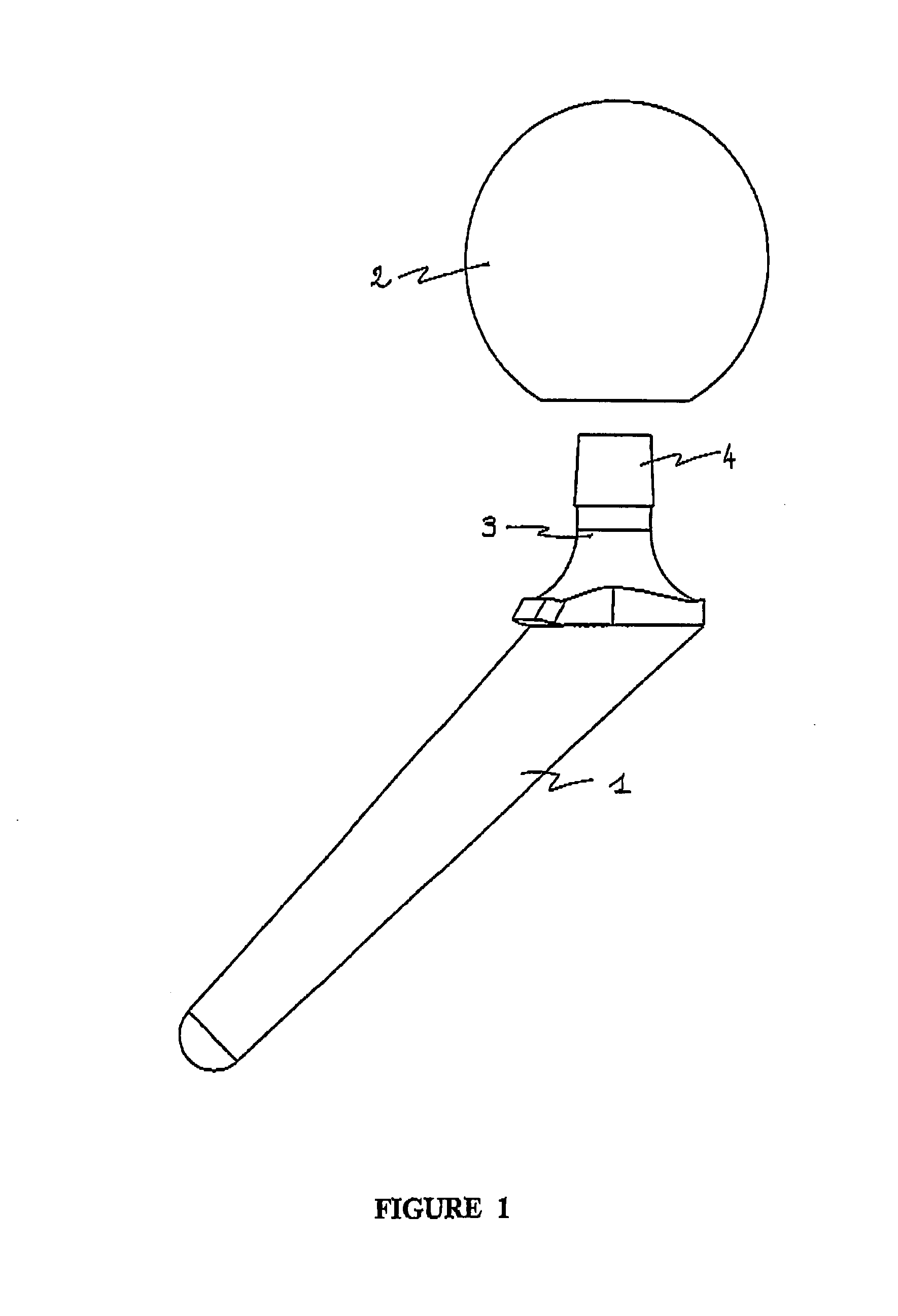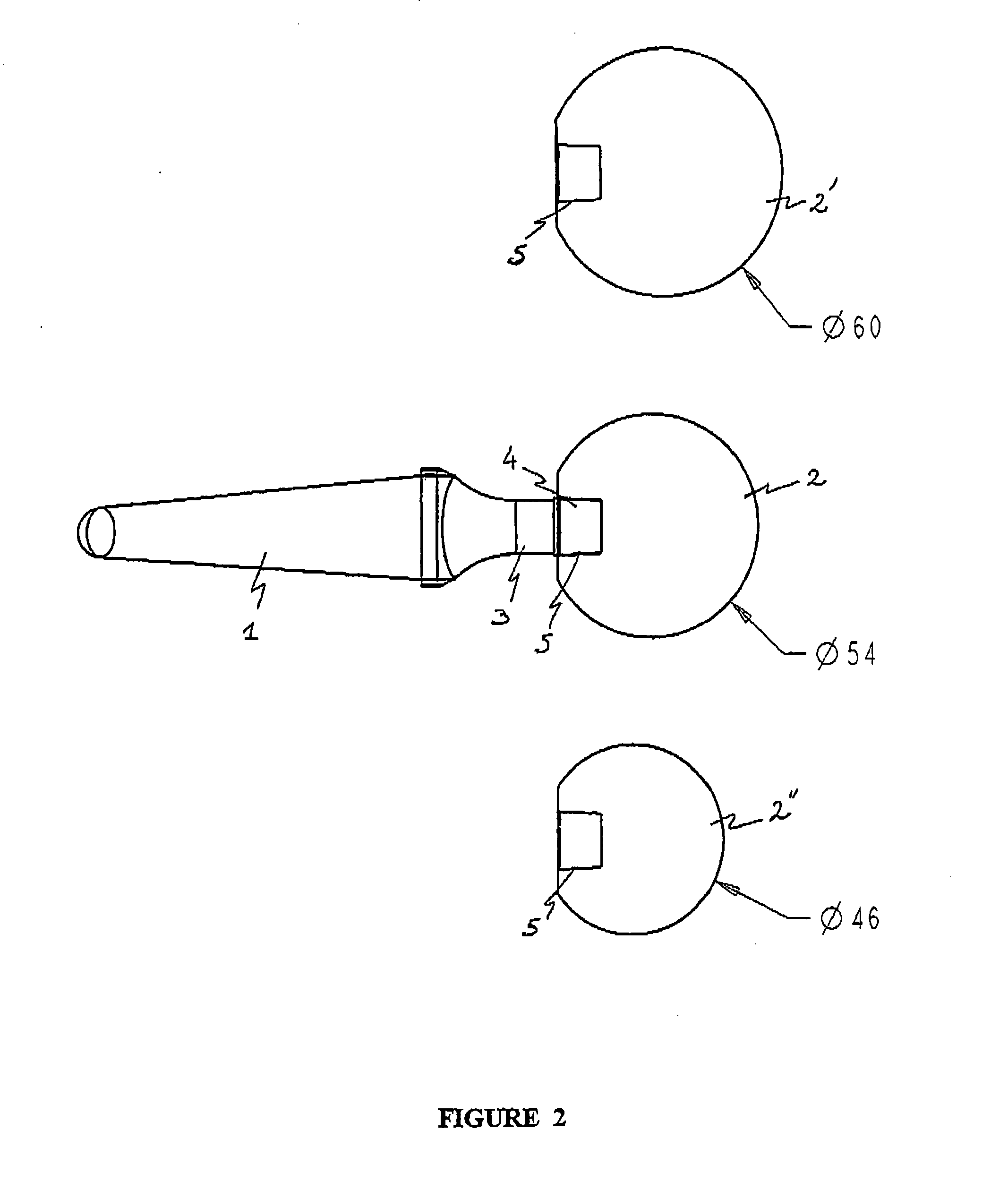Temporary implant incorporating two active ingredients
a technology of active ingredients and implants, which is applied in the field of temporary implants incorporating two active ingredients, can solve the problems of difficult mixing of powder compounds and problems of homogeneity, and achieve the effects of reducing the mechanical properties of cements, reducing the length of the technological process, and reducing the manufacturing cos
- Summary
- Abstract
- Description
- Claims
- Application Information
AI Technical Summary
Benefits of technology
Problems solved by technology
Method used
Image
Examples
example 1
Hip Spacer Structure
[0034]The polymer cement spacer device for the replacement of a hip prosthesis as illustrated in FIGS. 1 and 2 comprises:[0035]shank 1 which is suitable for attachment to the supporting bone, here the femur, comprising a first component loaded with a first active substance, and[0036]head 2 which is suitable for being located in the joint region, comprising a second component loaded with a second active substance.
[0037]These two components are complementary and incorporate rigid means for assembly between them located at the junction 3 between shank 1 and head 2 of the spacer. The assembly means comprise a tapering joint, the male cone 4 being borne by shank 1 and the female cone 4 by head 2, so that the spacer can be assembled by simple manual pressure, or with the aid of an impacter.
[0038]Shank 1 is of substantially tapering shape and ends at its proximal extremity in junction 3 bearing male cone 4. It is 120 mm long and has a diameter of 20 mm. It has a metal r...
example 2
Composition of a Cement C1
[0039]Composition C1 corresponds to a polymer cement containing gentamycin in the form of sulphate as a broad spectrum antibiotic.
[0040]
POWDER PHASE(% by weight)LIQUID PHASE(% by weight)PMMA:84.3%MMA:84.4%BPO:2.3%Butryl:13.2%BaSO4:9.6%DMPT: 2.4%Gentamycin3.8%HQ:20 ppmsulphate:
[0041]The cement is prepared by mixing 40 kg of powder phase with 25 kg of liquid phase in a reactor. When the mixture is uniform and of a creamy consistency it is poured into the manufacturing moulds. After drying and turning out, the parts are trimmed. They can then be sterilised and packed in a known way.
[0042]Parts containing gentamycin in a concentration of 2.34% by weight are obtained.
example 3
Composition of a Cement C2
[0043]Composition C2 corresponds to a polymer cement containing vancomycin as a targeted action antibiotic. It acts on microorganisms such as Gram positive aerobic species (Bacilli, Enterococci, Lysteria rhodococcus equi, Staphylococcus aureus, non-aureus Staphylococci, Streptococci in particular Streptococcus pneumonia), and anaerobic species (Clostridium, Eubacterium, Peptostreptococci, Propionibacterium acnes).
[0044]
POWDER PHASE(% by weight)LIQUID PHASE(% by weight)PMMA:87.6%MMA:84.4%BPO:2.4%Butryl:13.2%BaSO4:10.0%DMPT: 2.4%Vancomycin:4.8%HQ:20 ppm
[0045]Cement C2 is prepared using the same protocol as that described above for Example 2, using 42 kg of powder phase and 25 kg of liquid phase.
[0046]Parts containing vancomycin in a concentration of 1.25% are obtained.
PUM
 Login to View More
Login to View More Abstract
Description
Claims
Application Information
 Login to View More
Login to View More - R&D
- Intellectual Property
- Life Sciences
- Materials
- Tech Scout
- Unparalleled Data Quality
- Higher Quality Content
- 60% Fewer Hallucinations
Browse by: Latest US Patents, China's latest patents, Technical Efficacy Thesaurus, Application Domain, Technology Topic, Popular Technical Reports.
© 2025 PatSnap. All rights reserved.Legal|Privacy policy|Modern Slavery Act Transparency Statement|Sitemap|About US| Contact US: help@patsnap.com



